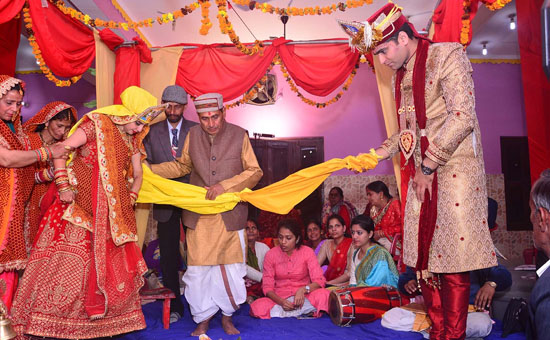Weddings in Uttarakhand are not just ceremonies; they are vibrant reflections of cultural legacies passed down through generations. Rooted in tradition yet adaptable to changing times, these matrimonial rituals offer a glimpse into the region’s rich heritage. Let’s embark on a journey to explore the timeless essence of traditional wedding customs in Uttarakhand.
Pre-1920 Marital Practices
Before delving into contemporary rituals, it’s essential to understand the historical context of matrimonial customs in Uttarakhand. In the pre-1920 era, three distinct marital relations prevailed in the region:
Wedded Wife: This traditional form of marriage, prevalent in the Kumaon Anchal, signifies the union of a woman with her husband through rituals and local customs.
Dhanti: Referred to as the wife of another man, typically a widow or abandoned spouse, who is brought into a new household without formal rituals.
Tekuwa: A unique relationship where a woman, often a widow, takes a man into her home as her husband, known as tekuwa or kathwa.
These historical practices, although not prevalent in contemporary society, offer insights into the social dynamics and economic realities of bygone eras.
Contemporary Marriage Customs
In modern Uttarakhand, three primary forms of marriage are practiced:
‘Aanchal’ Vivah: The most common form, characterized by Vedic rituals and the interlocking of the groom’s and bride’s ‘aanchal’ (long yellow cloth) as a symbol of union.
Sarol Vivah: Also known as bada or dola, this form involves bringing the bride to the groom’s house without elaborate rituals, followed by ceremonial proceedings.
Mandir Vivah: Marriages conducted in temples, such as the temples of Golu devta in Chitai and Ghorakhal in Nainital, symbolizing spiritual sanctity and cultural reverence.
Ritualistic Features
The traditional wedding rituals of Uttarakhand are characterized by symbolic gestures, rhythmic chants, and communal celebrations:
Invitations: Extended to friends and relatives, often accompanied by oral invitations to villagers, reflecting the community-centric nature of weddings.
Tilak Ceremony: Symbolizing engagement, where tilak is applied, and gifts are exchanged between the families.
Sindoor and Aanchal Bandhan: Marking the bride’s acceptance into the groom’s family through vermilion application and interlocking of aanchal.
Saptapadi: Seven ceremonial rounds around the sacred fire, symbolizing the couple’s mutual vows and lifelong commitment.
Dhuliarghay: Welcoming the groom’s party with traditional rituals, including washing the groom’s feet and offering gifts.
Preserving Cultural Heritage
While modern influences shape societal norms, efforts to preserve cultural heritage remain paramount:
Adapting Traditions: Embracing contemporary adaptations while retaining the essence of age-old customs ensures the continuity of cultural legacies.
Community Engagement: Involving communities in wedding festivities fosters a sense of belonging and strengthens cultural bonds.
Documentation and Education: Recording and sharing traditional practices through oral histories, literature, and educational initiatives safeguard cultural heritage for future generations.
Global Outreach: Despite geographical dispersion, migrant families uphold traditional customs, bridging cultural divides and fostering a sense of unity.
In conclusion, traditional wedding rituals in Uttarakhand epitomize the region’s cultural vibrancy and societal cohesion. By embracing heritage while embracing change, Uttarakhand’s weddings continue to weave a tapestry of timeless traditions and contemporary adaptations, preserving the essence of Kumaoni culture for generations to come.

